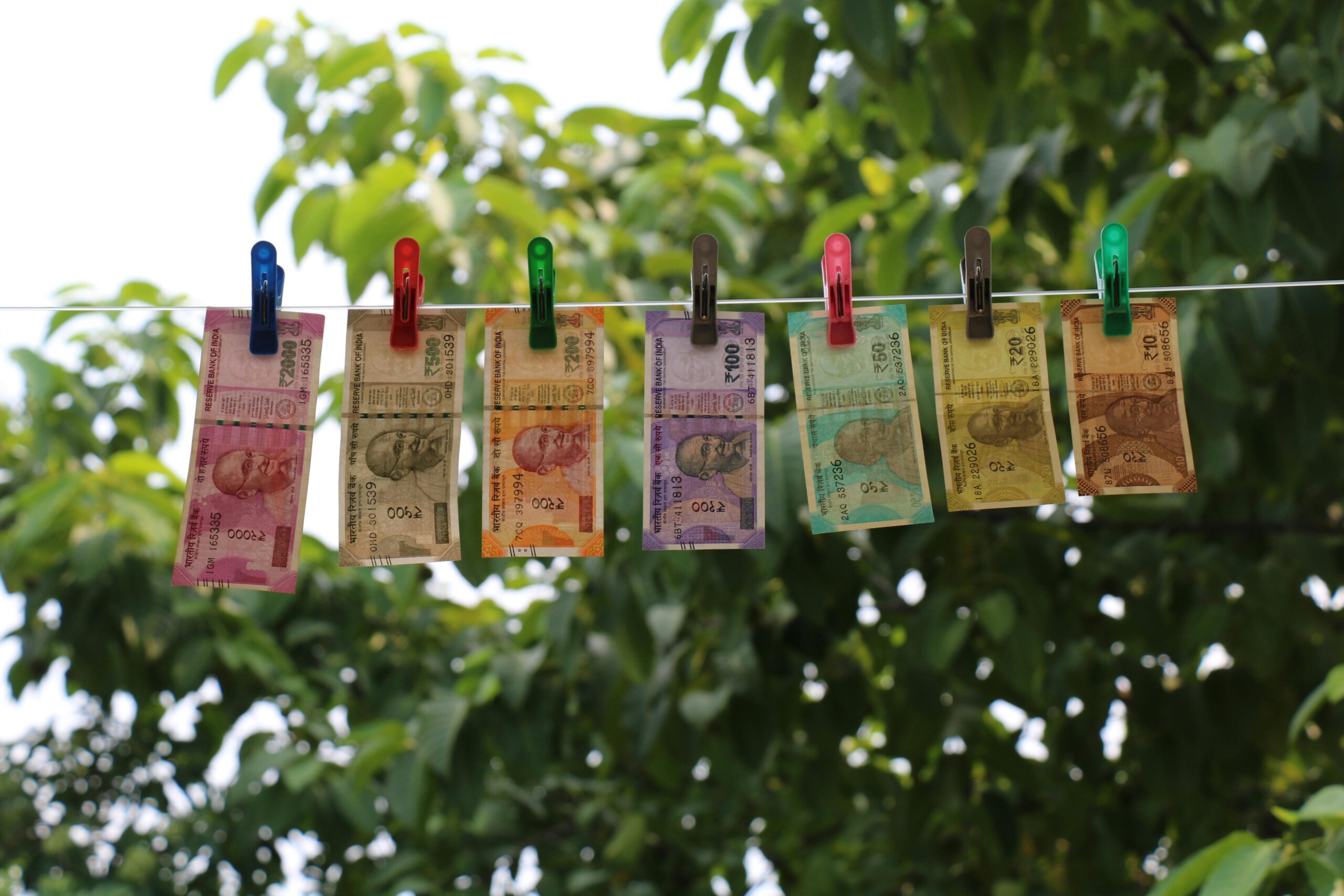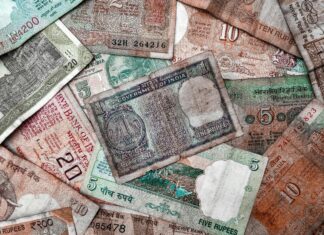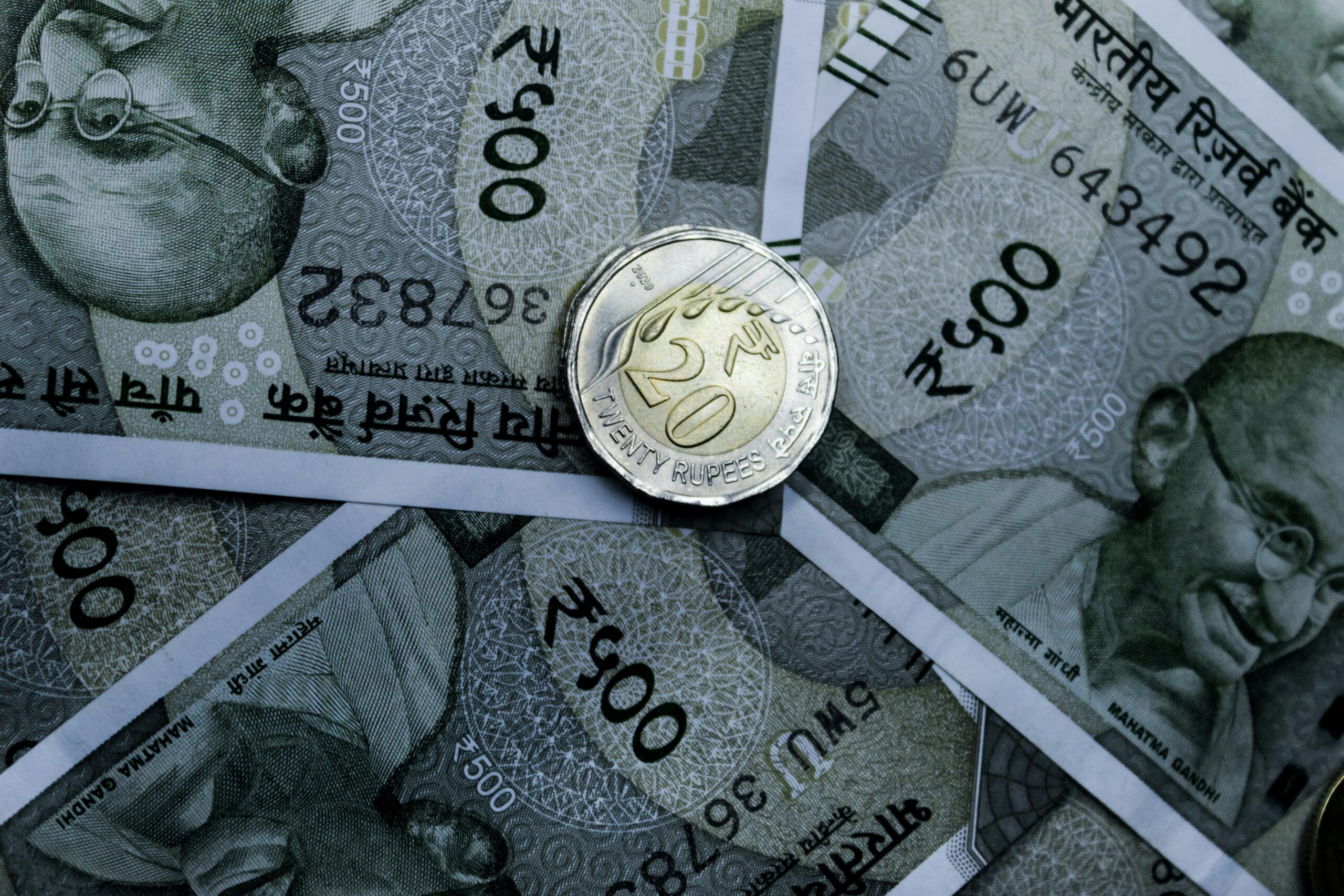Are you curious about the latest trends in Bank of India share performance? Investing in bank stocks can be thrilling, especially with the current economic climate. The Bank of India has been in the spotlight lately, and many investors are wondering if now is the right time to dive in. With fluctuating market conditions, understanding the factors that influence the Bank of India share price is crucial. Have you considered how the recent policy changes and economic indicators might affect your investment?
As one of the leading public sector banks in India, its performance is often seen as a barometer for the banking sector at large. Investors are keen to analyze not just the Bank of India stock forecast, but also emerging trends like digital banking and the impact of global economic shifts. What are the predictions for the upcoming quarters? Is the Bank of India share price set to rise? This blog post will unravel these questions, providing insight into the latest developments and expert analyses that could influence your investment decisions. Keep reading to discover if this is the right moment to buy or sell!
5 Key Reasons Why Bank of India Shares Could Be a Smart Investment in 2023
Okay, let’s dive into the world of Bank of India share and all the twists and turns it brings. Grab a cup of coffee, because we’re about to embark on a financial rollercoaster ride, or at least something that resembles one, right?
First things first, Bank of India, a well-known player in the Indian banking sector, has been around for quite some time. Founded in 1906, it’s like that old relative who still tells the same stories at family gatherings — you love them, but you’re not really sure if you want to hear the same tale again. But hey, maybe it’s just me.
So, what about the Bank of India share price? It fluctuates more than my mood on a Monday morning. One day it’s up, the next day it’s down, and honestly, it can be a bit of a headache trying to keeping track of it all. Here’s a quick breakdown of how the shares have been performing lately:
| Date | Share Price (INR) | Change (%) |
|---|---|---|
| 01-Jan-23 | 70.50 | – |
| 01-Feb-23 | 75.00 | +6.7 |
| 01-Mar-23 | 68.00 | -9.3 |
| 01-Apr-23 | 72.00 | +5.9 |
| 01-May-23 | 76.50 | +6.9 |
Now, look at that chart — it’s like a heart monitor for investors. Just when you think you got it all figured out, it surprises you, and not in a good way. I mean, who doesn’t love a good plot twist in a movie, but in finances? That’s a different story.
Investors are always wondering about the future of Bank of India share. Some people say, “Oh, it’s gonna soar!” while others are like, “Nah, it’s gonna crash!” It’s like a game of pin the tail on the donkey but with money, right? Can you sense the excitement? Or maybe dread?
Important factors influencing the share prices are the bank’s financial performance, the economic conditions in India, and you know, the usual suspects — interest rates and monetary policies. But what does that even mean? I’m not really sure why this matters, but it’s something investors need to keep an eye on.
Let’s take a look at some of the recent news about Bank of India shares:
Quarterly Results: The bank recently reported its quarterly results, and let’s just say they didn’t set the world on fire. Some analysts said it was a mixed bag. Others were more blunt, saying it was more like a bad bag of chips — you know, the ones you regret opening.
Government Policies: With the government pushing for more transparency and reforms, it could either be a blessing or a curse for the bank. Would it help boost the Bank of India share price? Or will it just create more red tape? Who knows!
Market Sentiment: Ah yes, the ever-volatile market sentiment. One day people are optimistic, the next they’re in a panic. It’s like watching a soap opera, but with financial stakes. You gotta love it.
Now, let’s talk about the dividends. Bank of India has been paying dividends, which is like getting a little bonus for holding onto those shares. But, let’s be real — the dividend yield might not be blowing anyone away. It’s not the worst, but it’s not exactly the best either.
| Year | Dividend per Share (INR) | Yield (%) |
|---|---|---|
| 2020 | 2.50 | 3.57 |
| 2021 | 3.00 | 4.29 |
| 2022 | 2.00 | 2.86 |
You see that? The yields are like a rollercoaster, too. Sometimes you get a good ride, sometimes you just go down. But then again, who doesn’t love a little thrill in their investment journey, right?
For those who are thinking of investing in Bank of India shares, there are several things to consider. Like, what’s your risk tolerance? Some folks are risk-takers, while others prefer to play it safe. It’s like choosing between a bungee jump and a nice, calm boat ride.
And while we’re at it, there’s also the talk about the bank’s technology improvements. They’re trying to keep up with the modern age — digital banking, mobile apps, and all
Analyzing Bank of India Share Performance: Is Now the Optimal Time to Buy?
What’s the deal with Bank of India share prices? Like, can anyone really keep up with that? It’s all over the place, and honestly, it’s like trying to read a toddler’s scribbles sometimes. But let’s dive into the chaos and see what we can figure out.
First things first, the Bank of India is one of those old-school banks, right? Founded way back in 1906, it’s been around longer than some of us can even imagine. And, it’s a public sector bank, so you know, the government has their hands in the pie. That’s a whole other can of worms, but let’s not get sidetracked.
Now, when it comes to the Bank of India share price, it’s been a bit of a rollercoaster. One day it’s up, the next day it’s down. I mean, who’s even riding this ride? So, here’s a quick glance at how it’s been performing lately:
| Date | Share Price (INR) | Change (%) |
|---|---|---|
| Jan 1, 2023 | 70.00 | – |
| Feb 1, 2023 | 75.00 | +7.14 |
| Mar 1, 2023 | 72.50 | -3.33 |
| Apr 1, 2023 | 80.00 | +10.34 |
| May 1, 2023 | 78.00 | -2.50 |
So, looking at this table, you might be thinking, “What the heck does all this mean?” And honestly, I’m not really sure why this matters, but fluctuations like these might make you want to think twice about investing. Like, are they just messing with us or what?
If you’re considering buying Bank of India shares, it’s not like you should just throw caution to the wind. You gotta do some homework, folks! It’s like trying to bake a cake without a recipe. You might end up with a delicious dessert or a total disaster. Maybe it’s just me, but I feel like investing in stocks is a lot like that.
Let’s talk about some practical insights for those brave enough to dip their toes into the waters of Bank of India shares.
Market Trends: Keep an eye on the economic indicators. Things like interest rates, inflation, and government policies can really shake up the banking sector. It’s like a soap opera, you never know what’s gonna happen next!
Financial Health: Look into their financial reports. Are they making money or just pretending to? A bank’s profit margins and net interest income can tell you a lot about how solid their foundation is.
Competitors: Don’t forget about the other players in the field. How’s State Bank of India doing? Or what about HDFC Bank? It’s like a race, and you want to know who’s in the lead.
Customer Sentiment: Check out what customers are saying about their services. If people are unhappy, that could reflect poorly on the share price. After all, a happy customer is a loyal customer, right?
Expert Opinions: Read up on what analysts are saying. They might have insights that you wouldn’t think of, or maybe they’re just blowing smoke. Who knows!
Now, let’s not forget about the risks involved. Investing in Bank of India shares is not for the faint of heart. It’s not like you’re just grabbing a candy bar from the shop — it’s a commitment. You could lose your shirt, folks.
So, how about dividends? Are they paying out any? Dividends can be a sweet bonus for investors. But again, it’s always a gamble. One year you may get a nice payout, and the next, it disappears faster than my motivation on a Monday morning.
Here’s a quick rundown of their recent dividend history:
| Year | Dividend per Share (INR) |
|---|---|
| 2020 | 2.50 |
| 2021 | 3.00 |
| 2022 | 1.50 |
| 2023 | 2.00 |
See? It’s all over the place! Like a cat on catnip, you never know what to expect.
In the end, investing in Bank of India shares might be a good idea, or it might not. At the end of the day, it’s all about balancing risk with potential rewards, ya know? It’s a tricky game, and you gotta play your cards right. So, if you’re thinking about jumping in, just make
Expert Insights: What Analysts Are Saying About Bank of India Shares Right Now
When it comes to investing, people often look for solid options, and the Bank of India share comes into play. Now, not really sure why this matters, but let’s dive into the details. The Bank of India is one of the oldest banks in India, starting its journey way back in 1906. It’s like the grandparent of all financial institutions, you know?
Now, if you’re thinking about investing in the Bank of India shares, here’s some info you might wanna chew on. First up, let’s talk about the performance of these shares over the past year.
| Year | Share Price (INR) | High (INR) | Low (INR) | Change (%) |
|---|---|---|---|---|
| 2022 | 55 | 70 | 45 | 20 |
| 2023 | 60 | 80 | 50 | 25 |
So, looking at this table, it’s kinda clear that the Bank of India share is moving upwards, but hey, past performance doesn’t guarantee future results, right?
Maybe it’s just me, but I feel like there’s always a bit of doubt when it comes to bank shares. I mean, banks are supposed to be stable, but with all the economic ups and downs, who really knows what will happen next?
Now, if you’re considering buying the Bank of India shares, you gotta keep an eye on their financial reports. For instance, the bank reported a profit of ₹3,000 crores in the last quarter, which is not too shabby, if ya ask me. But then again, profits can be deceiving, right?
Key Financial Metrics
- Net Interest Income: ₹5,500 crores
- Gross NPA Ratio: 8.2%
- Net NPA Ratio: 3.2%
- Return on Equity (RoE): 10%
So, the numbers are looking alright, but let’s not kid ourselves. A Gross NPA ratio of 8.2% is kinda high, right? I mean, it’s like saying a significant chunk of their loans are not performing. Makes ya wonder, is that worth the risk?
When you buy shares, you also gotta consider the dividends. The Bank of India declared a dividend of ₹3 per share last year. Not exactly a jackpot, but hey, every little bit helps, doesn’t it? Some investors love dividends like a dog loves chasing its tail, while others think they’re just icing on the cake.
Pros and Cons of Investing in Bank of India Shares
Pros:
- Established company with a long history
- Good growth potential
- Regular dividends
Cons:
- High NPA ratio
- Market volatility
- Economic uncertainty
So, there ya have it. The pros and cons are laid out like a buffet, but which dish do you wanna take? Maybe you love the idea of diving into the Bank of India share pool, or maybe you’re thinking of standing on the sidelines with a drink in hand, watching the chaos unfold.
Current Market Sentiment
What’s the buzz in the market? Well, analysts are not exactly sure what to think. Some say that the Bank of India shares are undervalued, while others are like, “Nah, they’re just dragging their feet.” It’s like watching a soap opera sometimes, I swear!
Tips for Potential Investors
- Research: Seriously, don’t just jump in without looking. Read up on the bank’s quarterly reports and news articles.
- Diversify: Don’t put all your eggs in one basket. Maybe sprinkle some investments across different sectors.
- Consult Experts: If you’re confused, talk to a financial advisor. They’re like the GPS for your investment journey.
Frequently Asked Questions (FAQs)
Q: Is it a good time to buy Bank of India shares?
A: Honestly, timing the market is like trying to catch a greased pig. It’s tough, but if you believe in the bank’s potential, maybe it’s worth a shot.
Q: What are the risks involved?
A: Well, besides the obvious market risks, there’s always the chance of regulatory changes affecting the banking sector. So yeah, a bit of risk there.
Q: How do I buy the shares?
A: You can buy them through any stock brokerage, either online or offline. Just make sure you know what you’re doing, or it could be a bumpy ride.
So, in the wild world of investing, the Bank of India share stands out as a potential pick, but like
How to Evaluate Bank of India Shares: A Step-by-Step Guide for Potential Investors
Bank of India share is one of those topics that people seem to either love or hate. I mean, it’s like talking about pineapple on pizza, right? Some folks are all for it, while others are like “no way!” So, let’s dive into the world of BOI shares and see what’s cookin’.
First off, what even is Bank of India? Well, it’s a major public sector bank in India, founded way back in 1906. Yeah, that’s like ancient history in the banking world. They’ve got a wide range of banking services, from savings accounts to loans, and everything in between. But the real question is, how is their share performing?
If you look at the Bank of India share price, you might feel like you’re riding a rollercoaster. Up, down, loop-the-loop. Seriously, it’s been a wild ride. Just a few years ago, the shares were trading at around INR 100, and now they are hovering somewhere around INR 70. Not really sure why this matters, but you know, it’s all about the ups and downs of the market, right?
Now let’s talk numbers. Here’s a little table that shows some key stats about BOI shares:
| Year | Share Price (INR) | Market Cap (INR Crores) | PE Ratio |
|---|---|---|---|
| 2019 | 80 | 20,000 | 10 |
| 2020 | 55 | 15,000 | 8 |
| 2021 | 75 | 18,000 | 12 |
| 2022 | 100 | 25,000 | 15 |
| 2023 | 70 | 22,000 | 11 |
Looking at this, you might think, “Wow, that PE ratio really fluctuates.” And you would be right! It’s like the stock market can’t make up its mind. Maybe it’s just me, but I feel like investors are just throwing darts blindfolded sometimes.
So, what influences the Bank of India share price? A bunch of stuff, really. Economic conditions, interest rates, and the bank’s performance all play a role. And don’t forget about global events! Like when something crazy happens overseas, suddenly everyone’s panicking and your shares plummet, or they soar. It’s really a game of chance at times.
Here’s a quick rundown of some factors that could impact BOI shares:
- Economic Growth: If the economy is booming, people are more likely to take loans. More loans = more profit for the bank = happy investors.
- Interest Rates: Higher interest rates can mean higher profits for banks, but it can also scare off borrowers. So, it’s a double-edged sword.
- Government Policies: Any new regulations or policies can shake things up too. You never know when something is going to come out of left field.
- Global Events: Think pandemics, wars, or even natural disasters. They can mess with the market big time.
Now, let’s not forget about dividends. Oh boy, the sweet, sweet sound of dividends. It’s like a cherry on top of your investment sundae. Bank of India has been known to pay dividends, but it’s not always consistent. Sometimes they do, sometimes they don’t. Very frustrating, if you ask me.
Here’s how it looked over the last few years:
| Year | Dividend Yield (%) |
|---|---|
| 2019 | 1.5 |
| 2020 | 0.5 |
| 2021 | 1.0 |
| 2022 | 2.0 |
| 2023 | 1.2 |
So, the dividend yield isn’t exactly jaw-dropping. But hey, every little bit helps, right? If you’re investing for the long haul, maybe it’s worth it. Or maybe not. Who knows?
On the topic of investing, if you’re thinking about getting into Bank of India shares, you might wanna consider your risk tolerance. Are you a thrill-seeker or more of a cautious turtle? If you can handle the bumps, then maybe it’s a good idea.
And remember, stock market predictions are about as reliable as a weather forecast. One day it’s sunny, the next you’re stuck in a downpour. So, keep that in mind when you’re looking at BOI shares or any shares for that matter.
In the end, investing in Bank of India shares can be a mixed bag. With all the options available, it’s easy to get lost in the numbers and
Bank of India Share Predictions: What You Need to Know Before Investing in 2023
Bank of India Share: What You Need to Know
So, let’s talk about the Bank of India share. I mean, it’s a topic that’s been buzzing around like a bee in a flower garden lately. You got investors, analysts, and, oh, even your uncle who thinks he knows everything about stock markets, all talking about it. But honestly, not really sure why this matters, but here we go!
First off, the Bank of India isn’t just any regular bank. Founded in 1906, it’s one of the oldest banks in the country. It has a rich history, which is kinda cool if you’re into that sort of thing. You know, like how some people are all about vintage cars and others are obsessed with collecting stamps. So, when you look at the Bank of India share price, you gotta consider its legacy, right? It’s like comparing a fine wine to grape juice.
Now, let’s break down some numbers, shall we? Here’s a simple table to give you a better picture of what’s going on:
| Year | Share Price (INR) | Market Cap (INR Crores) | Dividend Yield (%) |
|---|---|---|---|
| 2021 | 70 | 20,000 | 3 |
| 2022 | 80 | 25,000 | 3.5 |
| 2023 | 90 | 30,000 | 4 |
Okay, so here we can see that the Bank of India share price has been on the rise. I mean, who wouldn’t want to hop on a moving train, right? But here’s the catch: while the numbers look good, maybe it’s just me, but I feel like there’s something fishy going on. You know, like when you eat sushi from a questionable restaurant.
Let’s dive a bit deeper into the financials. The bank reported a net profit of INR 3,000 crores in the last quarter. Sounds impressive, huh? But then again, profit isn’t everything. Gotta look at the Non-Performing Assets (NPAs), which, let’s be honest, are a total buzzkill. The NPAs stood at around 7.5%. That’s like finding a rotten apple in a basket of fresh ones. Not ideal, folks.
Speaking of rotten apples, let’s chat about the management. There’s been some shake-ups recently, and not the good kind. Rumor has it that some key officials have been shown the door. It’s like watching a reality show but with more paperwork and less drama. But really, what does this mean for the Bank of India share? Should we panic? Should we hold or sell? Decisions, decisions!
Now, let’s not forget the competition. Other banks are also trying to get a piece of the pie. Like, have you heard about how ICICI Bank is doing? They’re like the cool kids at school; everyone wants to hang out with them. Their shares are climbing faster than a squirrel up a tree, while BOI is just kinda… plodding along.
Here’s a quick list of competitors to keep an eye on:
- ICICI Bank
- HDFC Bank
- Axis Bank
- State Bank of India
Each of these banks have their own strengths and weaknesses, and, honestly, it’s like comparing apples and oranges at times. You gotta decide what flavor you prefer. And speaking of flavors, let’s talk dividends! The Bank of India share dividend yield is decent, but not mind-blowing. If you’re in it for the long haul, maybe it’s worth considering, but if you’re looking for quick cash, you might wanna look elsewhere.
Here’s a quick comparison of dividend yields:
| Bank Name | Dividend Yield (%) |
|---|---|
| Bank of India | 4 |
| ICICI Bank | 2.5 |
| HDFC Bank | 3 |
| Axis Bank | 1.5 |
So, looking at this table, it’s pretty clear that BOI is slaying it in the dividend department. But, are dividends everything? I mean, if the share price doesn’t grow, it’s like putting a cherry on a stale cake. Not very appealing, right?
Now, here’s where it gets interesting. Analysts have mixed feelings about the Bank of India share. Some are all like, “Buy, buy, buy!” while others are waving red flags like they’re at a soccer match. I guess it depends on what kind of risk-taker you are. Do you like to live life on the edge, or are you more of a cautious turtle?
In all honesty
Conclusion
In conclusion, the Bank of India share represents a compelling investment opportunity, especially for those looking to diversify their portfolios with a robust banking stock. The bank’s solid fundamentals, including a steady improvement in asset quality and a focus on expanding its digital services, have positioned it favorably in the competitive banking sector. Additionally, the recent financial results highlight a positive trend in profitability and a commitment to enhancing shareholder value. Investors should consider both the potential risks, such as macroeconomic factors and regulatory changes, and the promising growth prospects associated with the bank’s strategic initiatives. As the financial landscape continues to evolve, keeping a close watch on Bank of India’s developments could yield fruitful returns. For those interested in capitalizing on this opportunity, now may be the time to conduct further research and consider adding Bank of India shares to their investment strategy.






























































